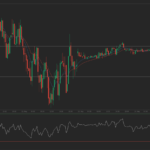West Texas Intermediate crude rose for a third day after a government report showed on Wednesday that US distillate fuel inventories fell for a fourth straight week, while crude oil supplies rose less than expected. Stockpiles at Cushing, Oklahoma, also slid after a new pipeline began carrying oil to the Gulf Coast from the hub, easing a bottleneck. Persisting cold weather in the eastern and northeastern US is expected to continue supporting the oil complex.
On the New York Mercantile Exchange, WTI crude for delivery in March rose by 0.22% to $97.59 per barrel by 7:58 GMT. Prices shifted in a narrow daily range between $97.64 and $97.25 per barrel. The US benchmark added 0.2% on Wednesday and jumped back to positive weekly territory following Thursdays advance.
Meanwhile on the ICE, Brent futures for settlement in the same month added 0.12% to trade at $106.38 per barrel. Days range stood between $106.47 and $106.15 a barrel. The European benchmark settled 0.4% higher on Wednesday and is almost unchanged on weekly basis. Brents premium to its US counterpart widened to $8.87 yesterday, based on closing prices, having narrowed down to $7.94 in intraday trading, the lowest since October 10th.
US crude continued to draw support after persisting cold weather across the US drained the nations distillate fuel stockpiles, a closely watched category during the winter, for a fourth straight week. Distillate supplies, which include diesel and heating oil, fell by 2.36 million barrels to 113.8 million in the week ended January 31st, slightly less than analysts’s projections for a 2.5-million drop, and remained well below the lower limit of the average range for this time of the year.
The Energy Information Administration also reported that the nation’s crude oil inventories rose by 440 000 barrels to 358.1 million last week, outperforming analysts’ expectations for an increase of 2.55 million barrels. This was in line with a private report by the industry-funded American Petroleum Institute that showed a build of 384 000 barrels.
Stockpiles at Cushing, Oklahoma, the biggest US storage hub and delivery point for NYMEX-traded contracts, dropped by 1.55 million barrels to 40.3 million after TransCanada’s Keystone XL pipeline began carrying oil from Cushing to the Gulf Coast.
Ric Spooner, a chief analyst at CMC Markets in Sydney, commented for Bloomberg: “The cold weather is an ongoing feature, and the inventory report helped oil to hold the line at current levels. Inventories are coming in a bit better than expected.”
Total motor gasoline inventories rose by 0.5 million barrels last week to 235 million, beating the median projection of 10 analysts surveyed by Bloomberg for a 1.15-million increase.
US crude also received support after a gauge of non-manufacturing activity in the US came in better than expected, showing strength in private sector hiring and suggesting the winter weather had a diminished effect on the worlds biggest economy. The Institute for Supply Management reported that its Non-Manufacturing PMI jumped to 54.0 in January, beating analysts predictions for an advance to 53.7 from Decembers reading of 53.0.
WTI is expected to remain underpinned as another series of winter storms hit the US yesterday, bringing heavy snow in the Northeast. Market players attention is now turned toward key employment numbers from the US due later in the week and the outcome of ECBs policy meeting to further asses global demand prospects and major currencies valuation.
Pressure
However, the oil market, and particularly the Brent benchmark, was pressured after output at North Sea’s 200 000-bpd Buzzard oilfield was restarted and is projected to return to normal levels within days after a new glitch was reported on Monday.
Also adding to pressure on the supply side, tankers have resumed loading crude from Libya’s 340 000-bpd El Sharara oilfield after bad weather closed ports in the western part of the country.
Laying some price support, Syria missed a deadline on Wednesday to surrender all of its chemical weaponry it had previously declared before the U.N., putting the program for a peaceful resolution to the US-Syria conflict behind schedule and spurring doubts whether the June 30th deadline is achievable.
Mark Keenan, head of commodities research in Asia at Societe Generale, said, cited by CNBC: “This has created some concern among market participants. I think one has to be very cautious about headlines out of the Middle East suggesting that things are on a path to reconciliation.”





